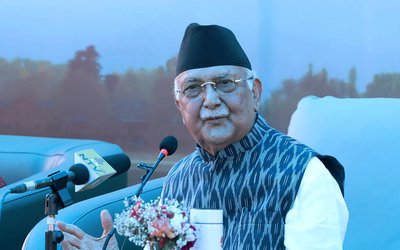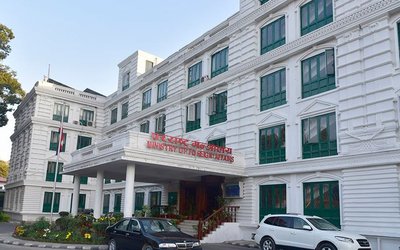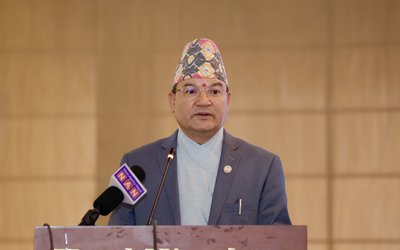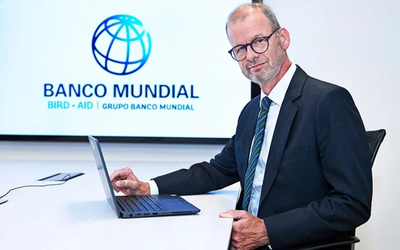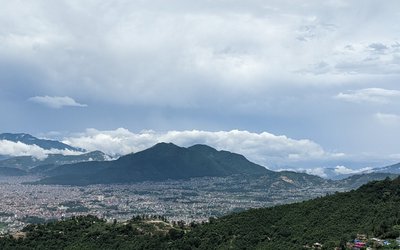I am in California, Berkeley working on the revision of the book “Where There Is No Doctor in 21 Century” (WTND). This book was first published in 1977 in English. Since then it has been translated into 88 languages.
It now needs revision as health issues have been changed and health workers in primary health care settings need more and different information than there is in it. I have been asked by the Hesperian foundation (publisher of WTND) to come to California and write some chapters in collaboration with the public health personnel here.
One issue that repeatedly keeps coming up over and over again is to include or not to include traditional medicine in the new version. My opinion is that it should be included and argument for this is that we have to use both modern medicine and traditional medicine in primary health care settings as there is proof that some countries are doing well with traditional medicine. To prove my argument, I used the latest news on how one Chinese pharmaceutical company desired to produce medicine from pudina (mint) to combat H5N1 avian influenza also known as bird flu. The company applied for patent right to the European Patent Office (EPO). However it has already been blocked by the Council of Scientific and Industrial Research, India (CSIR). With the help of India's Traditional Knowledge Digital Library (TKDL) as it was able to prove that pudina’s medicinal values has been known and had been used for thousands of years. Thus, it was argued that a new company could not have patent rights on the knowledge which has been there for thousands of years. If that patent was granted, the company would have the right to make and sell medicine out of mint. We would then have had to buy such medicine paying, most probably 100 times than its actual cost.
If mint can be used to combat bird flu similar remedies might be found for other diseases too. Other plant having herbal values is Neem, which is widely distributed in the Terai region of Nepal and India and it can be found in abundance in many parts of the world. I remember when I was small, my grandmother used twigs of the Neem tree as her toothbrush. I once tried it and its bitterness stopped me from using it further. At that time I did not know its values then, after many years, I would use Neem in Sudan after knowing its medicinal values and I have even now started chewing Neem leaves morning and evening just to make my body strong. This worked well while I was in Sudan for three months.
I am particularly very fascinated by a story about Neem. As our mythology mentioned long time ago, the Gods and Demons had a fight and the demons won the war so they took “Nectar” (Amrit) from the heaven. Now the problem was how would the Gods survive in heaven without Amrit? Therefore, they ordered a crow to steal the Nectar from the demons. The crow obeyed their orders and while it was bringing the nectar, in a wooden pot from the demons to heaven for the Gods place, some nectar fell from sky and fell on a Neem tree. The legend goes that since then the Neem got blessed with all the qualities of the Nectar. Therefore Neem is like nectar that can cure health problems but we have now forgotten about it.
The whole name of Neem in the Persian language, Farsi: is Azad Dirakht Hind.
Azad means free, Dirakht means tree, i-Hind means of Indian origin ‘The Free Tree of India". However, it can also be argued that this name has been given to the tree as it can grow freely in any part to the world. Neem tree is widely spread in many parts of Africa, Middle East and South America.
The Neem plant originates from India, where it has been used since centuries for several purposes. It is known as the “Village Pharmacy” or the “Tree for Solving Global Problems”. But we have forgotten our traditional knowledge and try to use expensive pills and injections for simple health problems.
What makes this tree a wonder tree is its chemical defenses. Neem tree was rediscovered in 1959 when a German scientist witnessed a locust swarm in Sudan. After the swarm had passed the only trees left untouched by the locusts were the Neem trees. On closer investigation, it was concluded that the locusts did indeed land on Neem trees, but they always left without feeding. Since this discovery, there has been worldwide scientific interest in Neem and intense research is being done to probe into its many properties. As a result, we now know that the Neem tree contains many natural active ingredients which make it resistant not only to locusts but also to more than three hundred different types of insect, as well as fungi, bacteria, and even viruses. These chemical defenses are not only useful in protecting Neem trees but can also be used as the basis for natural medicines. Therefore it is indeed a shame that it has been forgotten now.
The U.S. Department of Agriculture began a research program in 1975 to find out the use of Neem and other plants for its potential in controlling insects and fungi. The program eventually showed that Neem had the best results of any plant tested. Unfortunately we have not been using these plants with such medicinal values and the availability of getting it easily everywhere.
If by using those plants we can solve health problems, why not to use them? Does it mean that we do not need to use modern medicine? I would say that we have to use both in order to make us healthy and better. A golden middle path should be chosen so that we could solve health problems. As World Health Organization (WHO) has mentioned ‘the time is right to view traditional medicine as a precious resource. It needs to be respected and supported as a valuable source for therapeutic advances and the discovery of new classes of drugs.’
(Dr. Upreti writes on many issues particularly women health)

